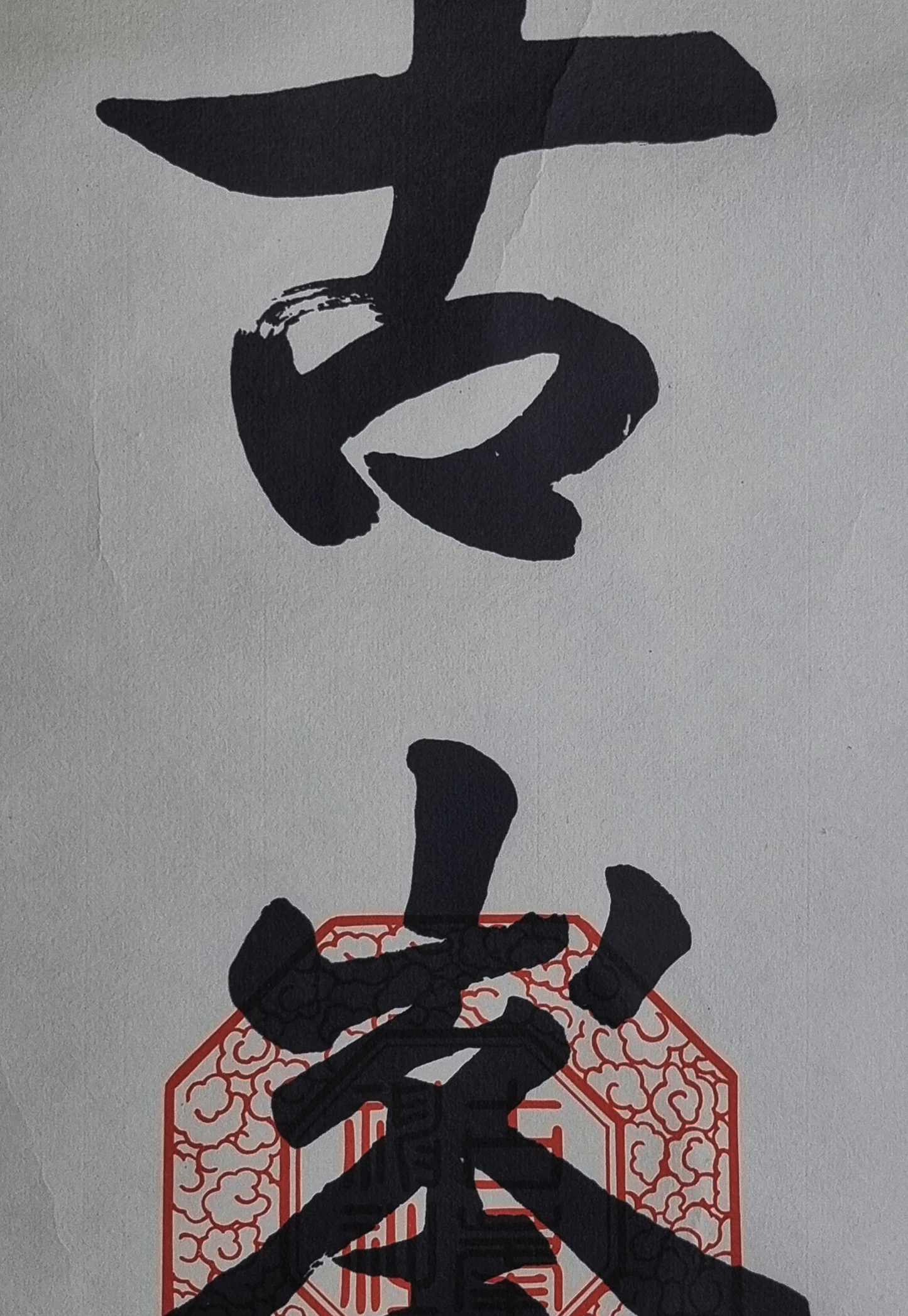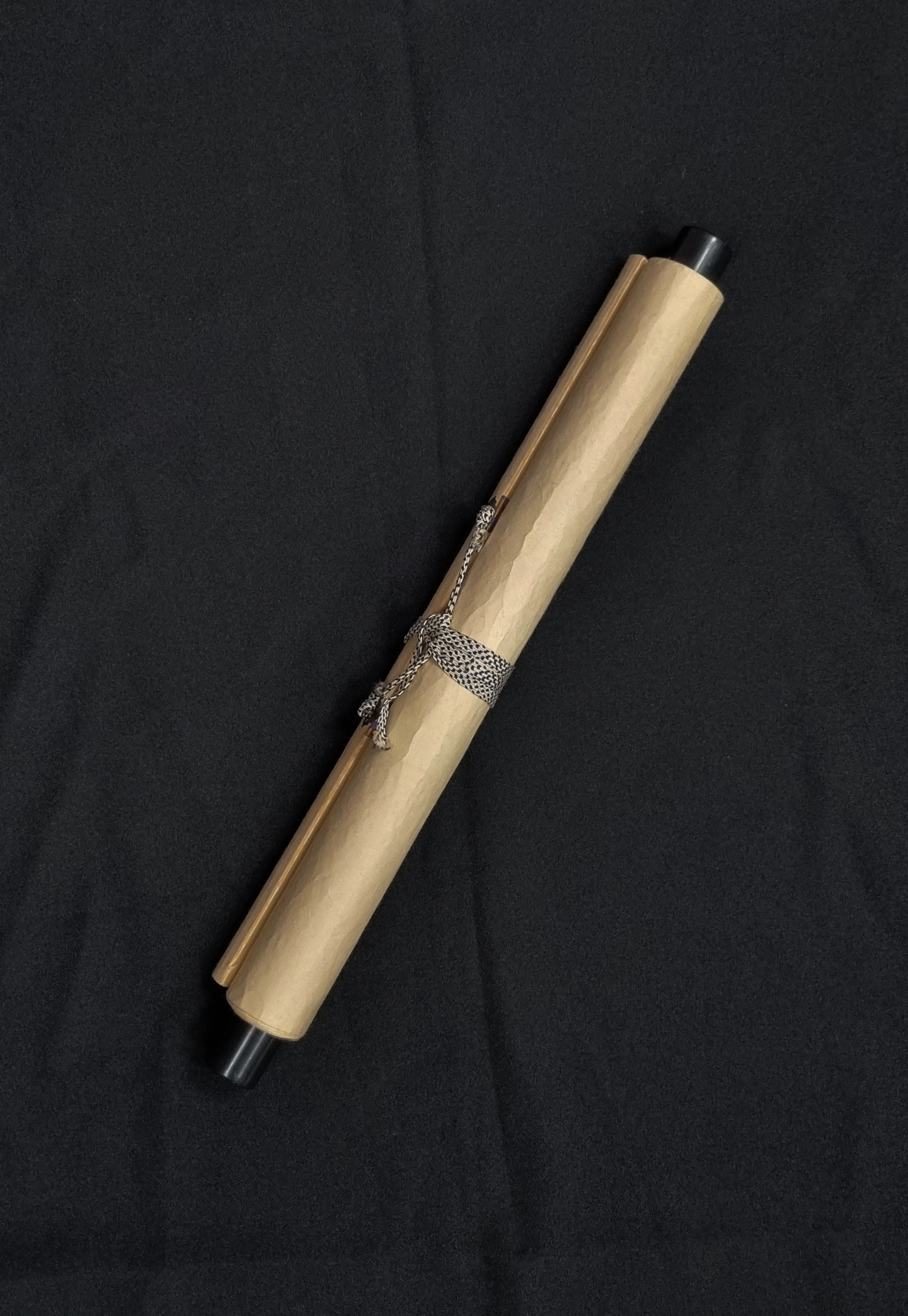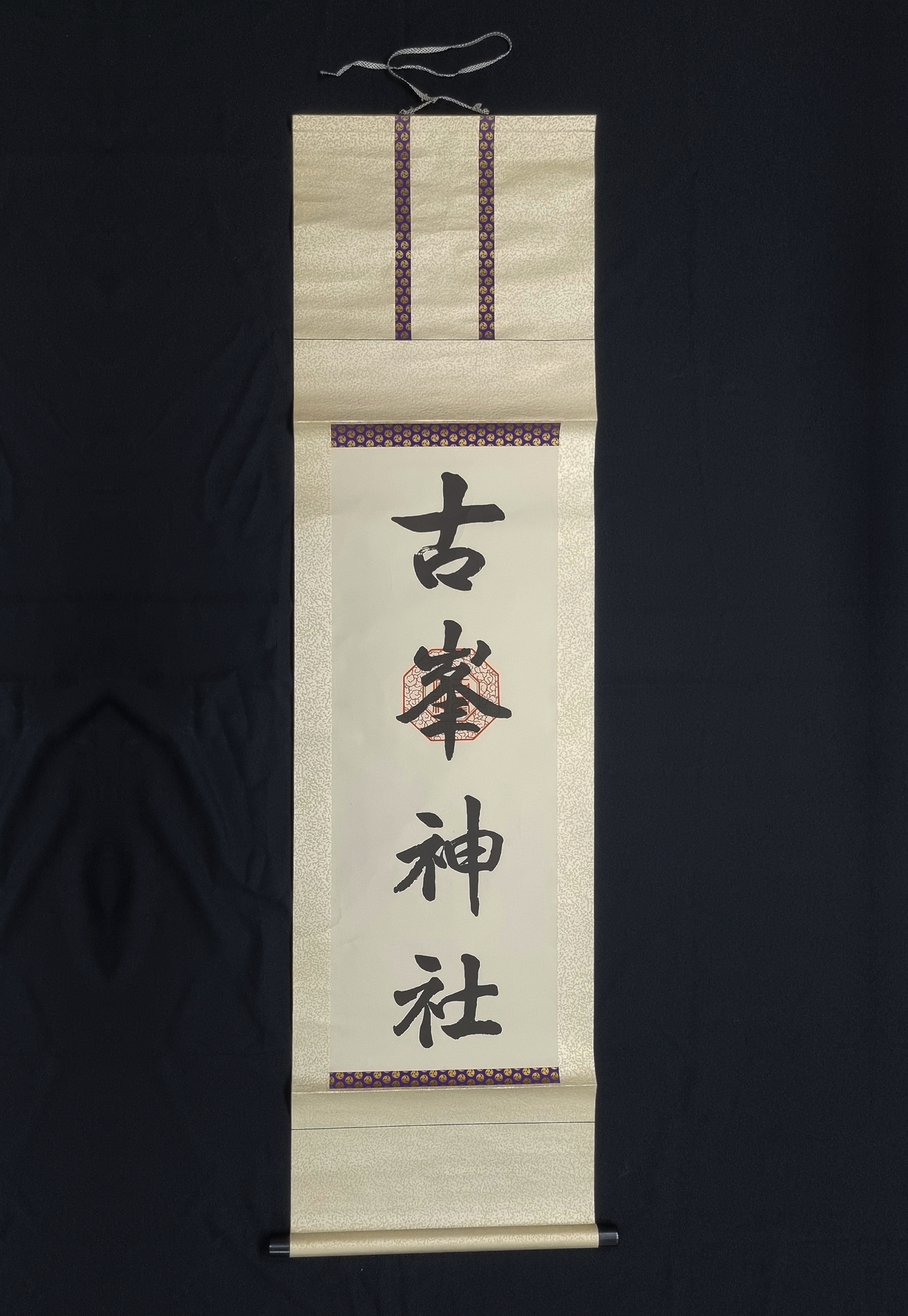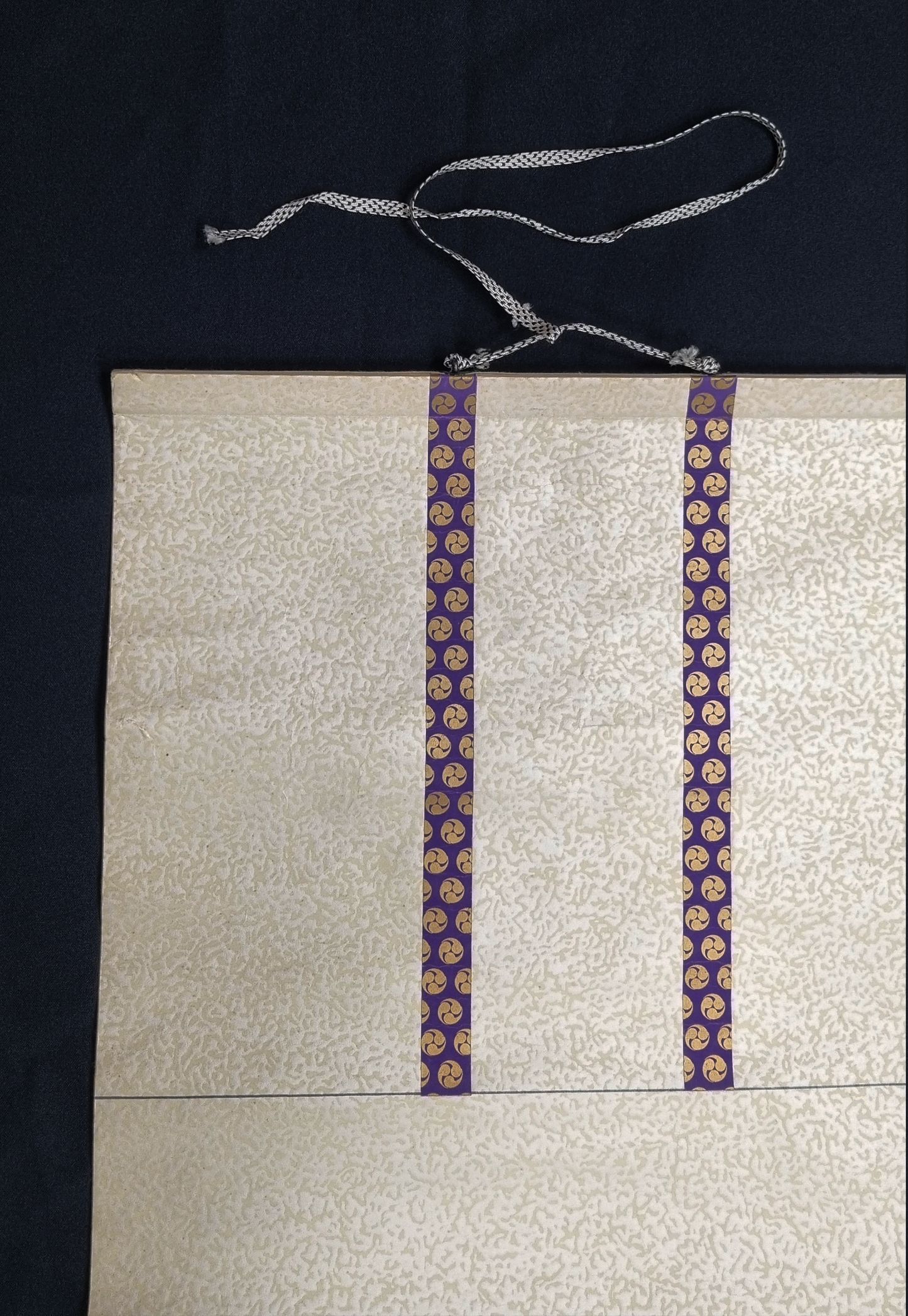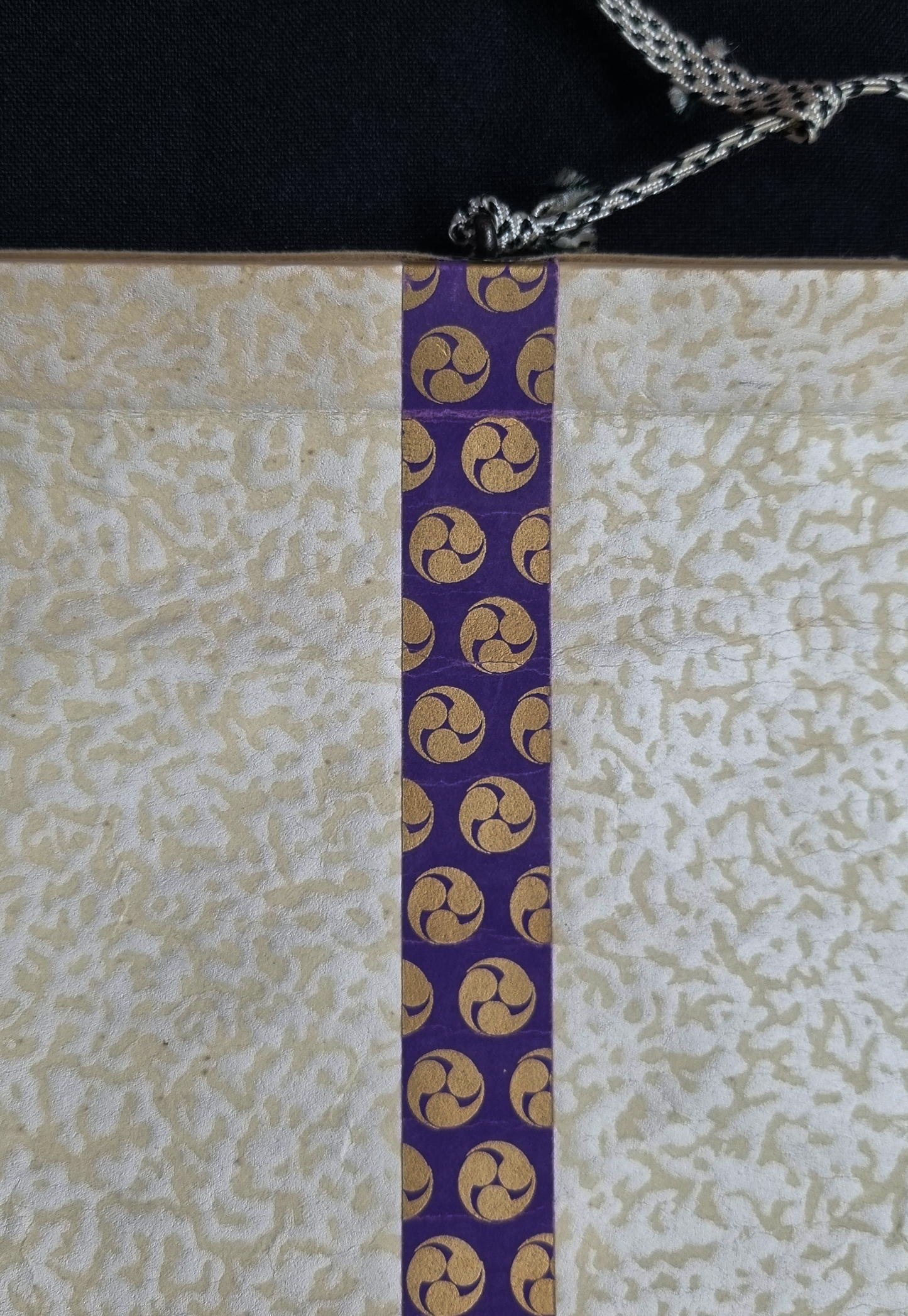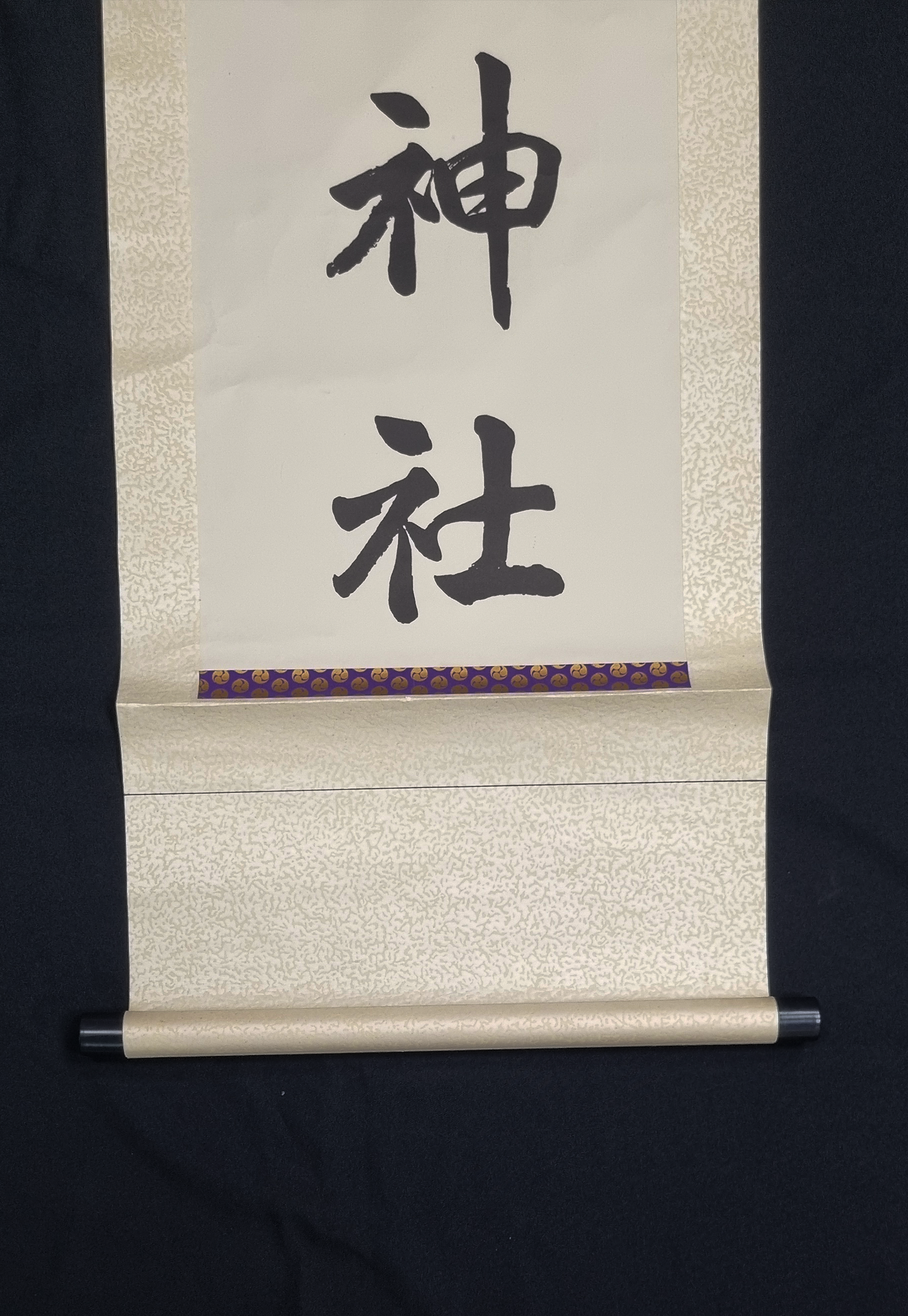Hontō
KAKEJIKU - Furumine Jinja
KAKEJIKU - Furumine Jinja
Couldn't load pickup availability
Share
Kakejiku (hanging scroll), or kakemono, is made of silk, Japanese paper, wood, and a special glue. Caution! Kakejiku do not like environments that are too humid or too dry. Keep out of direct sunlight.
This hanging scroll bears the calligraphy "古峯神社" (Furumine Jinja), the name of the Shinto shrine, in bold black brushstrokes and bears the official red seal (shuin) of the shrine. Such scrolls are traditionally hung in the home to receive protection, prosperity, and spiritual blessings.
"Jinja" (神社) is the Japanese term for a Shinto shrine. It is the place where kami (spirits or deities in the Japanese religion) are worshipped, and it contains the shrine buildings, such as the main chamber (honden) where the deity resides or represents it.
The red seal on the scroll has ritual significance: it represents spiritual authenticity and confirms that the object originates from the Furumine Jinja. Such seals are often applied with sacred ink by a monk or priest.
In Japan, these scrolls are often hung at the kamidana (神棚, home shrine) to invoke protection and good fortune.
Furumine Jinja
As a sacred shrine, Furumine Jinja has a long history. It is said to have originated over 1,300 years ago. According to local legend, it was founded by none other than the monk Shodo Shonin, considered the founder of Nikko.
Furumine Jinja honors the quasi-mythological hero and prince Yamato Takeru. The story of this legendary warrior, first mentioned in the earliest Japanese writings, is often compared to that of King Arthur due to their striking similarities.
Given its strong connection to Yamato Takeru, the Furumine Jinja is completely adorned with Tengu belongings and activities. These mythical beings are said to be messengers of Yamato Takeru and are therefore worshipped alongside him. Like other mountaintop complexes such as Mount Takao in Tokyo, images of Tengu often appear at sites where asceticism is practiced. In this respect, the Furumine Jinja is no exception.
Extra: Let me know if you ever want to visit this hidden temple, and I'll give you all the information you need on how to get there.
Specifications:
Title: Furumine Jinja (古峯神社)
Technique: Handwritten calligraphy with lacquer ink stamp, not printed.
Period: Late Taishō to Early Shōwa (ca. 1920–1940), traditional style.
Provenance: Furumine Shrine, Nikko, Tochigi Prefecture, Japan.
Type: Kakejiku (掛軸) – Ritual hanging scroll.
Dimensions: L 151 x W 44 cm.
